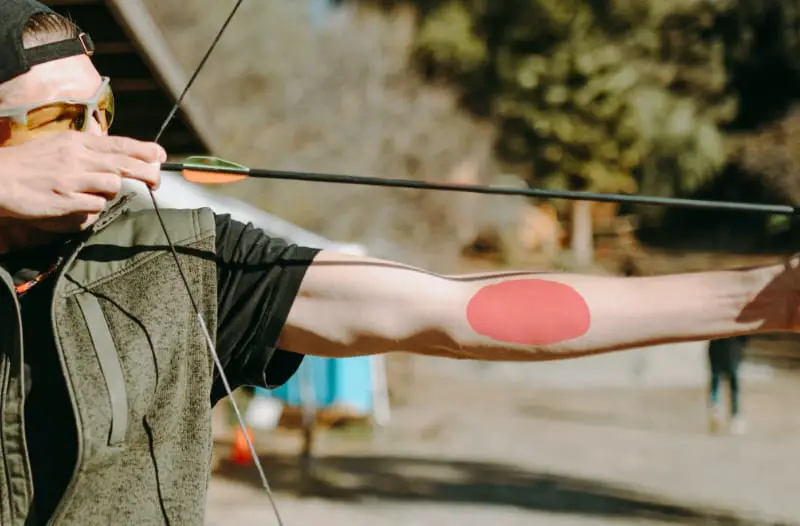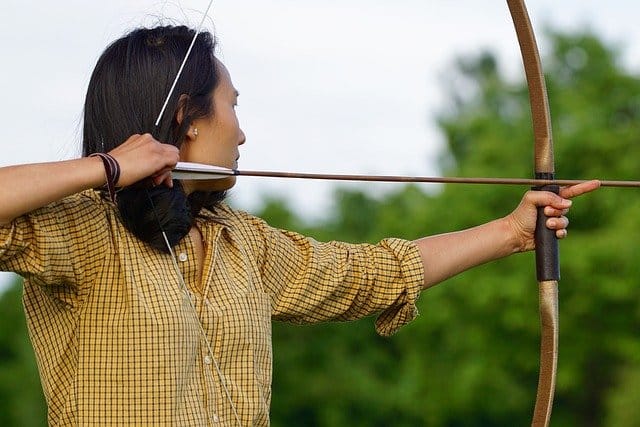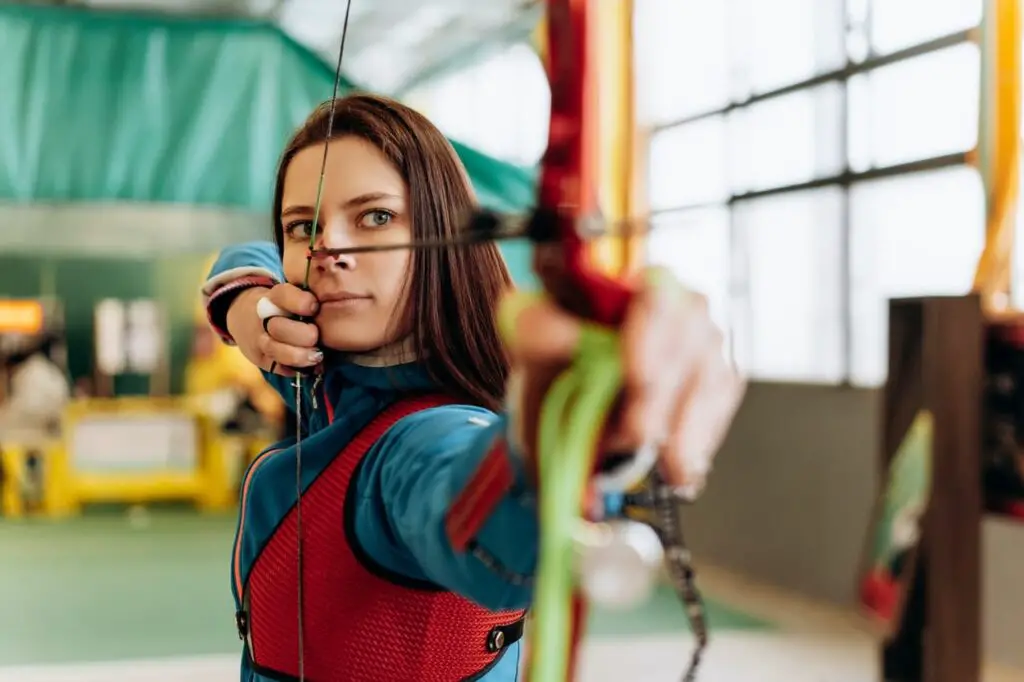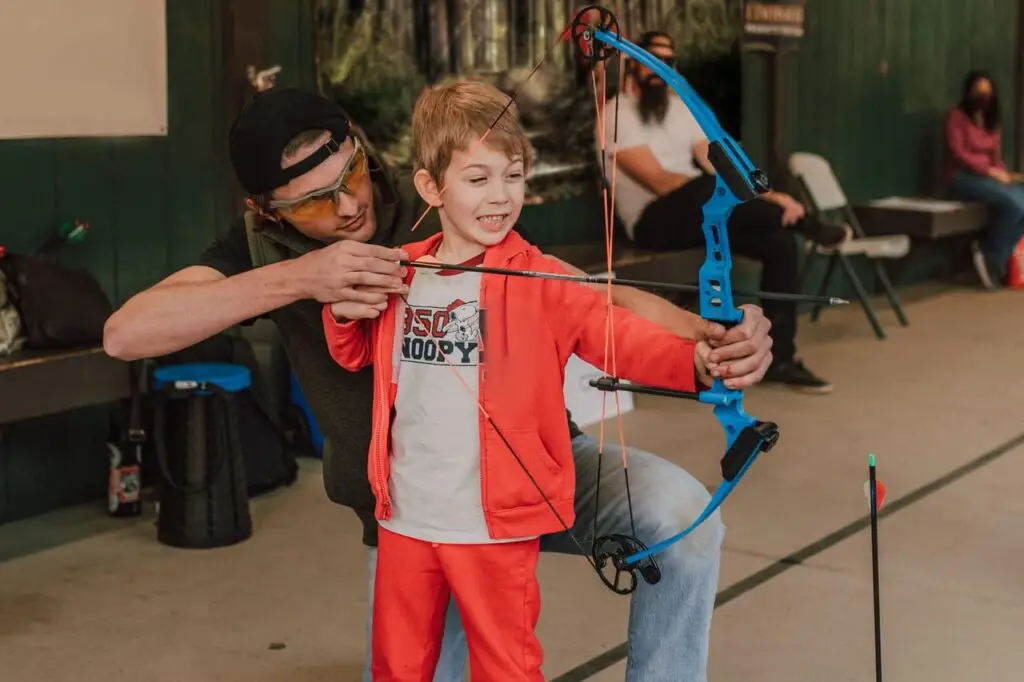Archers are prone to several different kinds of injury, but one of the most frequent (and frustrating) is a bow string slap. Bowstring slaps usually occur due to improper form, and can result in a painful bruise on the arm.
To treat a bow string slap, use the RICE method of bruise treatment (rest, ice, compress, elevate). You should also correct your form to prevent future injuries.
Here’s what you need to know about treating this common injury.

What Causes a Bow String Slap
More often than not, bow string slaps are caused by poor or fatigued form. When starting out, it may be natural instinct for you to grip the bow tightly to prevent it from springing out of your hands after a shot. Unfortunately, this can cause you to exert torque on the riser, rotating it into a position where the string is more likely to hit your arm.
You may also not have your elbow rotated correctly. Especially after long shooting sessions, your elbow may start to move inward as a result of a lack of focus. This can once again move your arm into the line of the string when it is released, causing a bow string slap.
Though it’s unlikely, it’s also possible for a slap to be caused by a technical problem rather than a problem with the archer. If the brace height (or, the distance between your riser and your string) is too short, your string may be too close to your wrist regardless of how you hold the bow. If you’ve corrected your form and are still getting slapped, this may be your culprit.
How to Treat a Bow String Slap
Though not a particularly serious injury, bow string slaps can be very painful, and they’ll still need to be treated to ensure that you heal up properly. The force of the tensioned string can often cause a much deeper bruise than you’re used to, which can be uncomfortable. When you get slapped, you should stop shooting for the day to allow the injury to heal and prevent it from getting damaged again.
String slaps can be treated like any other kind of bruise. The most popular method is the RICE technique.
- Rest the injury when possible. Take some time away from shooting to allow it the best chance to heal. Try not to use that arm excessively or participate in other potentially damaging activities for a few days.
- Ice the bruise. Use a cold compress (ice or a reusable freezer pack) wrapped in a towel on the area for between 10 and 20 minutes. This can be repeated a few times a day for a few days to reduce swelling and pain.
- Compress the area if it does start to swell, using a firmly wrapped bandage. Don’t tie it tight enough to restrict blood flow; it just needs to be tight enough to support the area.
- Elevate the bruise over your heart, when possible, to avoid swelling or pooling. You can do this with a few pillows when sitting or lying down.
A bruise will typically start out looking bright red, which will then become a darker black-and-blue mark as the blood starts to pool under the skin. After roughly a week, it will begin to turn either greenish or yellowish, as the blood is reabsorbed. After about two weeks, it will fade down to a brown mark, after which it will fade away entirely.
If the bruise begins to swell dramatically, or if it doesn’t start to fade or become less sensitive within a few days, call your doctor. It may be a sign that something more dramatic has happened beneath the surface.
How to Prevent Bow String Slaps in the Future
The best way to treat a bow string slap is to prevent bow slapping from happening at all. If you have issues with frequent string slaps, consider trying these prevention steps.
- An arm guard can be extremely useful for newer archers or archers who experience frequent string slaps. This is a piece of thick material (usually leather or, for modern equipment, Kevlar) that is strapped to your arm, and absorbs the hit of the string to prevent injury. You can find them online or at your local sporting goods store.
- Practice your grip to ensure that you’ve adjusted for the string’s recoil. Hold your bow with the riser resting against the pad below your thumb. Your grip should be stable but relatively loose to avoid torque issues.
- Check your arm placement before you shoot. Your elbow should be rotated slightly outward and slightly lower than parallel with the floor.
- Open your stance slightly by moving your front foot (left if you’re left-eye dominant, right if you’re right-eye dominant) away from the target by no more than about a foot. This is going to give you the room you need to shoot without injury.
If you’ve corrected all of these issues and find yourself still getting slapped frequently, consider adjusting your brace height. You can adjust this height by detaching and tightening the string, which will bend the limbs and move the string further away from the riser.
The exact height will vary from bow to bow depending on the manufacturer’s specifications, so be sure to check with your manufacturer for the best possible results. If you’re still unsure what to do, talk to a professional about the best options for adjusting your bow.
Final Thoughts
Learning to shoot can take a long time. The muscle memory and proper technique needed to shoot a bow safely and accurately only come from years of training and practice. Even then, mistakes can occur with the best of shots when they’re tired or simply having an off day.
If you find yourself frequently getting slapped, don’t take it as a sign of weakness. Treat the injury, correct your form, and learn from your mistakes. You’ll be back on the range in no time.


